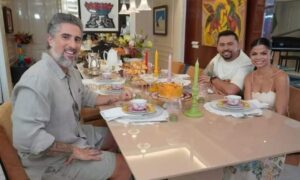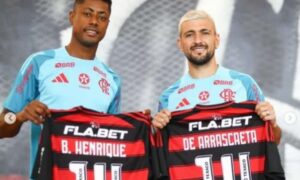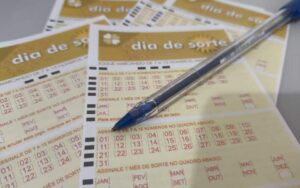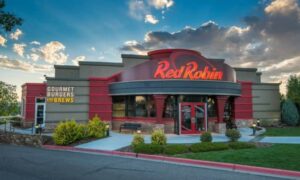The conclave to elect the new pope began on Wednesday, May 7, in the Sistine Chapel, Vatican City. Hundreds of faithful gathered in St. Peter’s Square, awaiting signals from the chimney that would indicate the choice of Francis’s successor, who passed away on April 21. So far, no white smoke has been sighted, suggesting that the 133 voting cardinals have not yet reached a consensus. Global anticipation grows, with the name of Italian Cardinal Pietro Parolin standing out as one of the main candidates for the papacy.
The voting, conducted in complete isolation, requires a candidate to secure two-thirds of the votes to be elected. The process, steeped in centuries-old rituals, keeps the cardinals cut off from the outside world. The absence of white smoke in the first afternoon session reinforces the possibility of a prolonged conclave. Among the names considered, Parolin, the current Vatican Secretary of State, is highlighted for his diplomatic experience and closeness to Francis’s legacy.
- What’s at stake: The choice of the new pope will shape the direction of the Catholic Church, with 1.4 billion faithful.
- Favorites in the race: Besides Parolin, names like Luis Antonio Tagle, Matteo Zuppi, and Péter Erdő appear in the bets.
- Absolute secrecy: Cardinals are prohibited from using phones, reading newspapers, or communicating with the outside.
- Smoke ritual: Black smoke indicates a vote without a winner; white smoke signals the election of the pope.
Profile of an experienced diplomat
Pietro Parolin, at 70 years old, has been a central figure in the Vatican since 2013, when he was appointed Secretary of State by Francis. Born in Schiavon, northern Italy, he entered the Vatican’s diplomatic service in 1983, after just two years as a parish priest. His career includes assignments in countries like Venezuela, China, and Vietnam, where he navigated political and religious tensions. Parolin is known for his skill in complex negotiations, such as the rapprochement between Cuba and the United States in 2015.
The cardinal also played a key role in relations with China, leading agreements on the appointment of bishops, though the pact drew criticism from conservative sectors. His moderate stance, balancing progressivism and tradition, positions him as a consensus candidate. Despite his extensive administrative experience, some Vatican analysts point to his limited pastoral work as a potential drawback. Parolin speaks five languages, including Spanish, English, and French, enhancing his ability to engage globally.
Tradition and secrecy in the conclave
The conclave, which began with a solemn Mass in St. Peter’s Basilica, follows rules established centuries ago. The cardinals, all under 80 years old, hold up to four voting sessions daily. Each voter writes their candidate’s name on a ballot with the phrase “Eligo in Summum Pontificem” (I elect as Supreme Pontiff). After counting, the ballots are burned, producing the smoke the world watches. The process is overseen by the cardinal camerlengo, Kevin Farrell, with Parolin presiding over key ceremonies.
The Sistine Chapel, adorned with Michelangelo’s frescoes, is swept for microphones or cameras. Secrecy is so strict that any breach can lead to excommunication. In 2025, the College of Cardinals is more global than ever, with less than 50% of voters being European. This diversity reflects the internationalization promoted by Francis, who appointed 80% of the current voting cardinals.
- Total isolation: Cardinals are housed in the Domus Sanctae Marthae, with no access to external news.
- Daily votes: Up to four sessions occur daily, with prayer breaks after three days without consensus.
- Oath of secrecy: Each cardinal swears, under penalty of excommunication, not to reveal process details.
- Black smoke: A chemical compound in the burning ballots signals no pope has been chosen.

Parolin’s history in the curia
Parolin’s rise in the Vatican began early. Ordained a priest in 1980, he studied canon law in Rome and joined Vatican diplomacy at 28. From 2009 to 2013, he served as apostolic nuncio in Venezuela, facing Hugo Chávez’s government. His ability to maintain the Church’s influence in hostile contexts stood out. In 2013, Francis chose him as Secretary of State, a role combining the duties of prime minister and foreign minister.
Under Francis, Parolin managed financial crises in the Secretariat of State, though some scandals tainted his tenure. He also faced criticism from conservatives for his conciliatory approach to China. Still, his reputation as a political negotiator remains strong. Parolin is seen as a continuer of Francis’s legacy, but with a more reserved and bureaucratic style.
Other prominent candidates
While Parolin leads the bets, other cardinals are in the race. Luis Antonio Tagle, a 67-year-old Filipino, is known for his progressive ideas and charisma. Archbishop of Manila before being called to Rome by Francis, he serves as pro-prefect of the Dicastery for Evangelization. Matteo Zuppi, a 69-year-old Italian, gained prominence for his work with the Community of Sant’Egidio, mediating conflicts in Mozambique and Ukraine. Péter Erdő, a 72-year-old Hungarian, is respected for his academic and conservative profile.
- Luis Antonio Tagle: Charismatic, young, and progressive, dubbed the “Asian Francis.”
- Matteo Zuppi: A diplomat with peace negotiation experience, representing the moderate wing.
- Péter Erdő: A conservative theologian, with strong support among European cardinals.
- Fridolin Ambongo: Congolese cardinal, advocating for African Catholics amid persecutions.
The influence of Francis’s legacy
Francis, the first Latin American pope, left a diversified College of Cardinals. Of the 133 voters, 54 are from Europe, 31 from Africa, 25 from Asia, 19 from Latin America, and 4 from Oceania. This composition reflects a vision of a global Church, less centered in Rome. The next pope’s election will hinge on alliances among these groups, with Parolin seen as a bridge between factions.
Francis’s pontificate was marked by reforms, such as openness to divorced Catholics and an emphasis on social justice. Parolin, as his close collaborator, supported these changes but also upheld traditional stances, like opposition to same-sex marriage. His ability to navigate between progressives and conservatives makes him a strong candidate, though the Roman proverb “he who enters as pope, leaves as cardinal” suggests surprises are possible.
Voting dynamics
The first voting rounds tend to reveal favorites. If no candidate secures the required 89 votes, the conclave may extend for days. After three days without consensus, cardinals pause for 24 hours of prayer. After 34 ballots, the top two candidates face a “runoff,” still needing two-thirds of the votes. In 2013, Francis was elected in two days, but historical conclaves have lasted weeks.
The push for an Italian pope, after three non-Italian pontiffs, favors Parolin, Zuppi, and Pizzaballa. However, the growing influence of African and Asian cardinals could boost names like Tagle or Ambongo. Voting is shaped by pre-conclave meetings, where cardinals discuss issues like immigration, the environment, and the Church’s evangelizing mission.
Parolin’s role in the conclave
Beyond being a candidate, Parolin plays a central role in organizing the conclave. He presides over major Masses, such as the one on April 27, and coordinates logistical operations. His visibility during the mourning period for Francis strengthened his position. However, some analysts question whether his “bureaucrat” image might alienate cardinals seeking a pope with a strong pastoral profile.
Parolin has also faced controversies. His alleged ties to Freemasonry, mentioned in 2002 by an Italian grand master, sparked speculation, though no evidence of current connections exists. Additionally, his management of the Secretariat of State was criticized for financial scandals, despite his reputation for integrity.
- Ceremonial role: Parolin leads key rituals, increasing his visibility.
- Internal criticism: Financial scandals in the Secretariat of State generate resistance.
- International relations: His experience with China and Cuba is seen as an asset.
- Political mediator: Parolin is skilled at forming alliances among cardinals.
The wait in St. Peter’s Square
In St. Peter’s Square, faithful from around the world follow the conclave. Many hold rosaries, while others take photos of the Sistine Chapel’s chimney. Expectations are high, especially among Italians, who dream of a compatriot pope after 47 years. Tourists and pilgrims fill Rome’s hotels, and security has been tightened in Vatican City.
Global media is also mobilized. Betting platforms, like Polymarket, record millions of dollars in wagers, with Parolin leading at 27%, followed by Tagle at 23%. In Brazil, where conclave betting is prohibited, media coverage highlights the seven Brazilian voting cardinals, such as Dom Odilo Scherer and Dom Leonardo Steiner.
Brazilian representation in the conclave
Brazil, with the world’s largest Catholic population, has seven voting cardinals. Dom Jaime Spengler, president of the CNBB, and Dom Sergio da Rocha, Brazil’s primate, are among the voters. While no Brazilian is a favorite, their influence is significant. The cardinals discuss issues like Amazon preservation and evangelization in urban areas, reflecting the priorities of Brazilian Catholicism.
- Dom Odilo Scherer: São Paulo’s archbishop, considered in 2013.
- Dom Leonardo Steiner: First Amazon cardinal, emphasizes environmental issues.
- Dom Jaime Spengler: CNBB leader, represents the Brazilian Church.
- Moral weight: Brazil influences debates on social justice and evangelization.
What defines the new pope
The next pope’s election will depend on factors like age, origin, and ideological alignment. Younger cardinals, like Tagle and Ambongo, may be seen as options for a long pontificate. Conversely, figures like Parolin, at 70, offer experience and stability. The need for a leader to address global conflicts, such as wars in the Middle East and Ukraine, also weighs in the decision.
The Church faces challenges like secularization in Europe, the growth of Catholicism in Africa, and persecution of Christians in some regions. The new pope will need to balance tradition and modernity, maintaining unity among 1.4 billion faithful. Parolin, with his diplomatic skills, is seen as capable of tackling these issues, but the vote remains unpredictable.
Curiosities of the electoral process
The conclave is filled with unique traditions. The Sistine Chapel’s chimney, installed days earlier, is the process’s main symbol. Black smoke, produced by a chemical mix, contrasts with white smoke, made with potassium chlorate. The “habemus papam” ritual, announced from St. Peter’s Basilica’s balcony, marks the conclave’s end. In 2013, Francis surprised the world with his simplicity, asking for prayers.
- Secret ballots: Cardinals disguise their handwriting to ensure anonymity.
- Historic smoke: In 1958, the smoke caused confusion by appearing gray.
- Fisherman’s Ring: The new pope receives a unique ring, destroyed after his death.
- Extra omnes: The Latin phrase orders non-voters to leave the Sistine Chapel.
Parolin’s diplomacy in focus
Parolin’s experience in international crises is one of his greatest assets. He mediated talks with Vietnam to restore diplomatic ties and defended Stuart’s government. His work in China, though controversial, prevented a schism with the local Church. These achievements highlight his ability to lead the Church in a world marked by conflict and polarization.
Parolin also took stances on global issues, such as climate change, aligning with Francis’s Laudato Si’ encyclical. He supports a more democratic Church but maintains traditional positions, like opposition to female deacons. This duality makes him a versatile candidate, capable of attracting votes from different wings of the College of Cardinals.
Expectations for the coming days
With no white smoke in the first vote, the conclave may extend. Analysts predict that the next sessions, on Thursday morning and afternoon, will be decisive. The crowd in St. Peter’s Square remains vigilant, while the world awaits the new pope’s announcement. The choice will define not only the Church’s future but also its influence on issues like peace, the environment, and social justice.
The cardinals, aware of their responsibility, continue discussions in the Sistine Chapel. The election of Parolin, Tagle, or another candidate will depend on intense negotiations in the coming days. For now, the chimney remains silent, keeping the suspense over who will be the next leader of the Catholics.

The conclave to elect the new pope began on Wednesday, May 7, in the Sistine Chapel, Vatican City. Hundreds of faithful gathered in St. Peter’s Square, awaiting signals from the chimney that would indicate the choice of Francis’s successor, who passed away on April 21. So far, no white smoke has been sighted, suggesting that the 133 voting cardinals have not yet reached a consensus. Global anticipation grows, with the name of Italian Cardinal Pietro Parolin standing out as one of the main candidates for the papacy.
The voting, conducted in complete isolation, requires a candidate to secure two-thirds of the votes to be elected. The process, steeped in centuries-old rituals, keeps the cardinals cut off from the outside world. The absence of white smoke in the first afternoon session reinforces the possibility of a prolonged conclave. Among the names considered, Parolin, the current Vatican Secretary of State, is highlighted for his diplomatic experience and closeness to Francis’s legacy.
- What’s at stake: The choice of the new pope will shape the direction of the Catholic Church, with 1.4 billion faithful.
- Favorites in the race: Besides Parolin, names like Luis Antonio Tagle, Matteo Zuppi, and Péter Erdő appear in the bets.
- Absolute secrecy: Cardinals are prohibited from using phones, reading newspapers, or communicating with the outside.
- Smoke ritual: Black smoke indicates a vote without a winner; white smoke signals the election of the pope.
Profile of an experienced diplomat
Pietro Parolin, at 70 years old, has been a central figure in the Vatican since 2013, when he was appointed Secretary of State by Francis. Born in Schiavon, northern Italy, he entered the Vatican’s diplomatic service in 1983, after just two years as a parish priest. His career includes assignments in countries like Venezuela, China, and Vietnam, where he navigated political and religious tensions. Parolin is known for his skill in complex negotiations, such as the rapprochement between Cuba and the United States in 2015.
The cardinal also played a key role in relations with China, leading agreements on the appointment of bishops, though the pact drew criticism from conservative sectors. His moderate stance, balancing progressivism and tradition, positions him as a consensus candidate. Despite his extensive administrative experience, some Vatican analysts point to his limited pastoral work as a potential drawback. Parolin speaks five languages, including Spanish, English, and French, enhancing his ability to engage globally.
Tradition and secrecy in the conclave
The conclave, which began with a solemn Mass in St. Peter’s Basilica, follows rules established centuries ago. The cardinals, all under 80 years old, hold up to four voting sessions daily. Each voter writes their candidate’s name on a ballot with the phrase “Eligo in Summum Pontificem” (I elect as Supreme Pontiff). After counting, the ballots are burned, producing the smoke the world watches. The process is overseen by the cardinal camerlengo, Kevin Farrell, with Parolin presiding over key ceremonies.
The Sistine Chapel, adorned with Michelangelo’s frescoes, is swept for microphones or cameras. Secrecy is so strict that any breach can lead to excommunication. In 2025, the College of Cardinals is more global than ever, with less than 50% of voters being European. This diversity reflects the internationalization promoted by Francis, who appointed 80% of the current voting cardinals.
- Total isolation: Cardinals are housed in the Domus Sanctae Marthae, with no access to external news.
- Daily votes: Up to four sessions occur daily, with prayer breaks after three days without consensus.
- Oath of secrecy: Each cardinal swears, under penalty of excommunication, not to reveal process details.
- Black smoke: A chemical compound in the burning ballots signals no pope has been chosen.

Parolin’s history in the curia
Parolin’s rise in the Vatican began early. Ordained a priest in 1980, he studied canon law in Rome and joined Vatican diplomacy at 28. From 2009 to 2013, he served as apostolic nuncio in Venezuela, facing Hugo Chávez’s government. His ability to maintain the Church’s influence in hostile contexts stood out. In 2013, Francis chose him as Secretary of State, a role combining the duties of prime minister and foreign minister.
Under Francis, Parolin managed financial crises in the Secretariat of State, though some scandals tainted his tenure. He also faced criticism from conservatives for his conciliatory approach to China. Still, his reputation as a political negotiator remains strong. Parolin is seen as a continuer of Francis’s legacy, but with a more reserved and bureaucratic style.
Other prominent candidates
While Parolin leads the bets, other cardinals are in the race. Luis Antonio Tagle, a 67-year-old Filipino, is known for his progressive ideas and charisma. Archbishop of Manila before being called to Rome by Francis, he serves as pro-prefect of the Dicastery for Evangelization. Matteo Zuppi, a 69-year-old Italian, gained prominence for his work with the Community of Sant’Egidio, mediating conflicts in Mozambique and Ukraine. Péter Erdő, a 72-year-old Hungarian, is respected for his academic and conservative profile.
- Luis Antonio Tagle: Charismatic, young, and progressive, dubbed the “Asian Francis.”
- Matteo Zuppi: A diplomat with peace negotiation experience, representing the moderate wing.
- Péter Erdő: A conservative theologian, with strong support among European cardinals.
- Fridolin Ambongo: Congolese cardinal, advocating for African Catholics amid persecutions.
The influence of Francis’s legacy
Francis, the first Latin American pope, left a diversified College of Cardinals. Of the 133 voters, 54 are from Europe, 31 from Africa, 25 from Asia, 19 from Latin America, and 4 from Oceania. This composition reflects a vision of a global Church, less centered in Rome. The next pope’s election will hinge on alliances among these groups, with Parolin seen as a bridge between factions.
Francis’s pontificate was marked by reforms, such as openness to divorced Catholics and an emphasis on social justice. Parolin, as his close collaborator, supported these changes but also upheld traditional stances, like opposition to same-sex marriage. His ability to navigate between progressives and conservatives makes him a strong candidate, though the Roman proverb “he who enters as pope, leaves as cardinal” suggests surprises are possible.
Voting dynamics
The first voting rounds tend to reveal favorites. If no candidate secures the required 89 votes, the conclave may extend for days. After three days without consensus, cardinals pause for 24 hours of prayer. After 34 ballots, the top two candidates face a “runoff,” still needing two-thirds of the votes. In 2013, Francis was elected in two days, but historical conclaves have lasted weeks.
The push for an Italian pope, after three non-Italian pontiffs, favors Parolin, Zuppi, and Pizzaballa. However, the growing influence of African and Asian cardinals could boost names like Tagle or Ambongo. Voting is shaped by pre-conclave meetings, where cardinals discuss issues like immigration, the environment, and the Church’s evangelizing mission.
Parolin’s role in the conclave
Beyond being a candidate, Parolin plays a central role in organizing the conclave. He presides over major Masses, such as the one on April 27, and coordinates logistical operations. His visibility during the mourning period for Francis strengthened his position. However, some analysts question whether his “bureaucrat” image might alienate cardinals seeking a pope with a strong pastoral profile.
Parolin has also faced controversies. His alleged ties to Freemasonry, mentioned in 2002 by an Italian grand master, sparked speculation, though no evidence of current connections exists. Additionally, his management of the Secretariat of State was criticized for financial scandals, despite his reputation for integrity.
- Ceremonial role: Parolin leads key rituals, increasing his visibility.
- Internal criticism: Financial scandals in the Secretariat of State generate resistance.
- International relations: His experience with China and Cuba is seen as an asset.
- Political mediator: Parolin is skilled at forming alliances among cardinals.
The wait in St. Peter’s Square
In St. Peter’s Square, faithful from around the world follow the conclave. Many hold rosaries, while others take photos of the Sistine Chapel’s chimney. Expectations are high, especially among Italians, who dream of a compatriot pope after 47 years. Tourists and pilgrims fill Rome’s hotels, and security has been tightened in Vatican City.
Global media is also mobilized. Betting platforms, like Polymarket, record millions of dollars in wagers, with Parolin leading at 27%, followed by Tagle at 23%. In Brazil, where conclave betting is prohibited, media coverage highlights the seven Brazilian voting cardinals, such as Dom Odilo Scherer and Dom Leonardo Steiner.
Brazilian representation in the conclave
Brazil, with the world’s largest Catholic population, has seven voting cardinals. Dom Jaime Spengler, president of the CNBB, and Dom Sergio da Rocha, Brazil’s primate, are among the voters. While no Brazilian is a favorite, their influence is significant. The cardinals discuss issues like Amazon preservation and evangelization in urban areas, reflecting the priorities of Brazilian Catholicism.
- Dom Odilo Scherer: São Paulo’s archbishop, considered in 2013.
- Dom Leonardo Steiner: First Amazon cardinal, emphasizes environmental issues.
- Dom Jaime Spengler: CNBB leader, represents the Brazilian Church.
- Moral weight: Brazil influences debates on social justice and evangelization.
What defines the new pope
The next pope’s election will depend on factors like age, origin, and ideological alignment. Younger cardinals, like Tagle and Ambongo, may be seen as options for a long pontificate. Conversely, figures like Parolin, at 70, offer experience and stability. The need for a leader to address global conflicts, such as wars in the Middle East and Ukraine, also weighs in the decision.
The Church faces challenges like secularization in Europe, the growth of Catholicism in Africa, and persecution of Christians in some regions. The new pope will need to balance tradition and modernity, maintaining unity among 1.4 billion faithful. Parolin, with his diplomatic skills, is seen as capable of tackling these issues, but the vote remains unpredictable.
Curiosities of the electoral process
The conclave is filled with unique traditions. The Sistine Chapel’s chimney, installed days earlier, is the process’s main symbol. Black smoke, produced by a chemical mix, contrasts with white smoke, made with potassium chlorate. The “habemus papam” ritual, announced from St. Peter’s Basilica’s balcony, marks the conclave’s end. In 2013, Francis surprised the world with his simplicity, asking for prayers.
- Secret ballots: Cardinals disguise their handwriting to ensure anonymity.
- Historic smoke: In 1958, the smoke caused confusion by appearing gray.
- Fisherman’s Ring: The new pope receives a unique ring, destroyed after his death.
- Extra omnes: The Latin phrase orders non-voters to leave the Sistine Chapel.
Parolin’s diplomacy in focus
Parolin’s experience in international crises is one of his greatest assets. He mediated talks with Vietnam to restore diplomatic ties and defended Stuart’s government. His work in China, though controversial, prevented a schism with the local Church. These achievements highlight his ability to lead the Church in a world marked by conflict and polarization.
Parolin also took stances on global issues, such as climate change, aligning with Francis’s Laudato Si’ encyclical. He supports a more democratic Church but maintains traditional positions, like opposition to female deacons. This duality makes him a versatile candidate, capable of attracting votes from different wings of the College of Cardinals.
Expectations for the coming days
With no white smoke in the first vote, the conclave may extend. Analysts predict that the next sessions, on Thursday morning and afternoon, will be decisive. The crowd in St. Peter’s Square remains vigilant, while the world awaits the new pope’s announcement. The choice will define not only the Church’s future but also its influence on issues like peace, the environment, and social justice.
The cardinals, aware of their responsibility, continue discussions in the Sistine Chapel. The election of Parolin, Tagle, or another candidate will depend on intense negotiations in the coming days. For now, the chimney remains silent, keeping the suspense over who will be the next leader of the Catholics.







